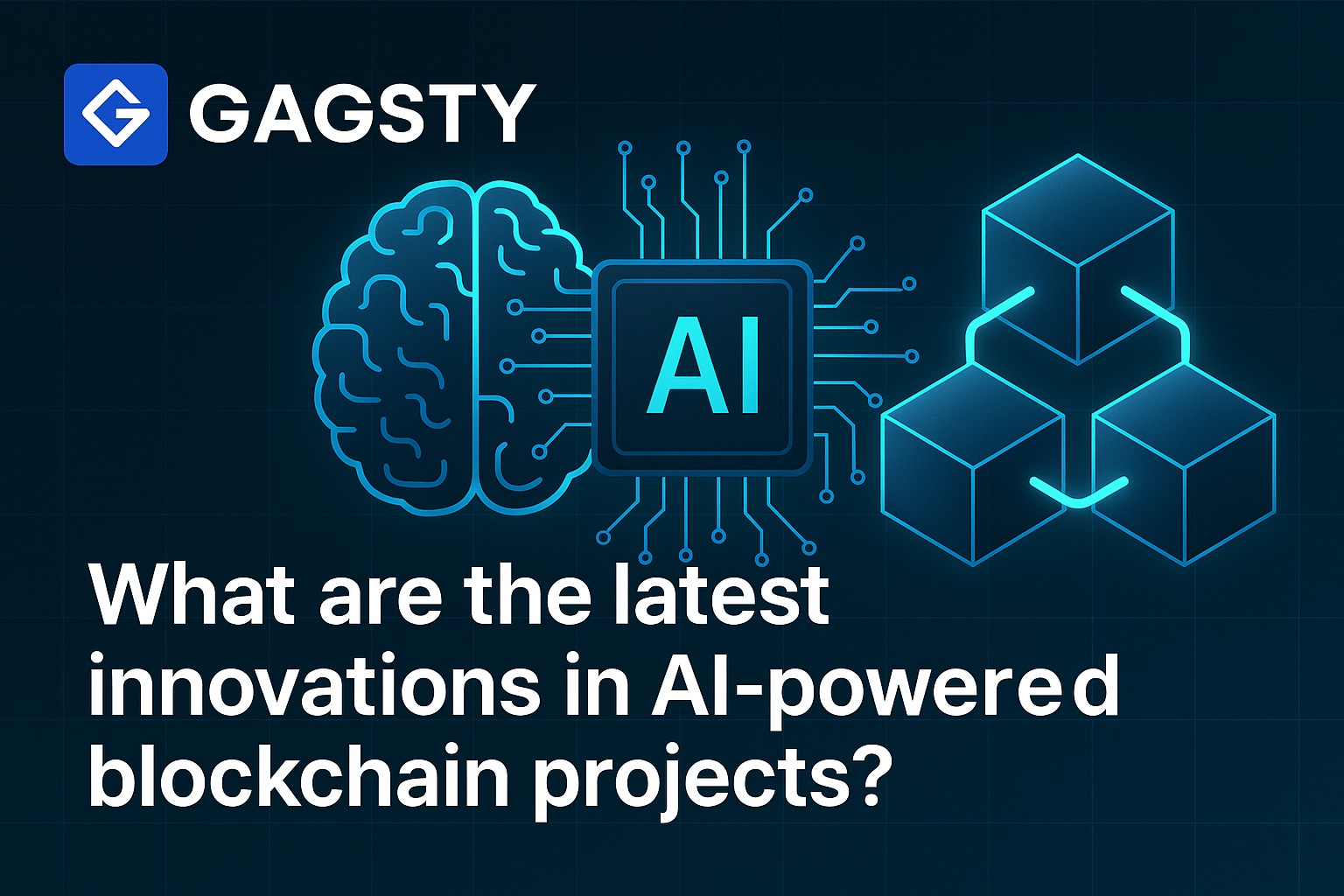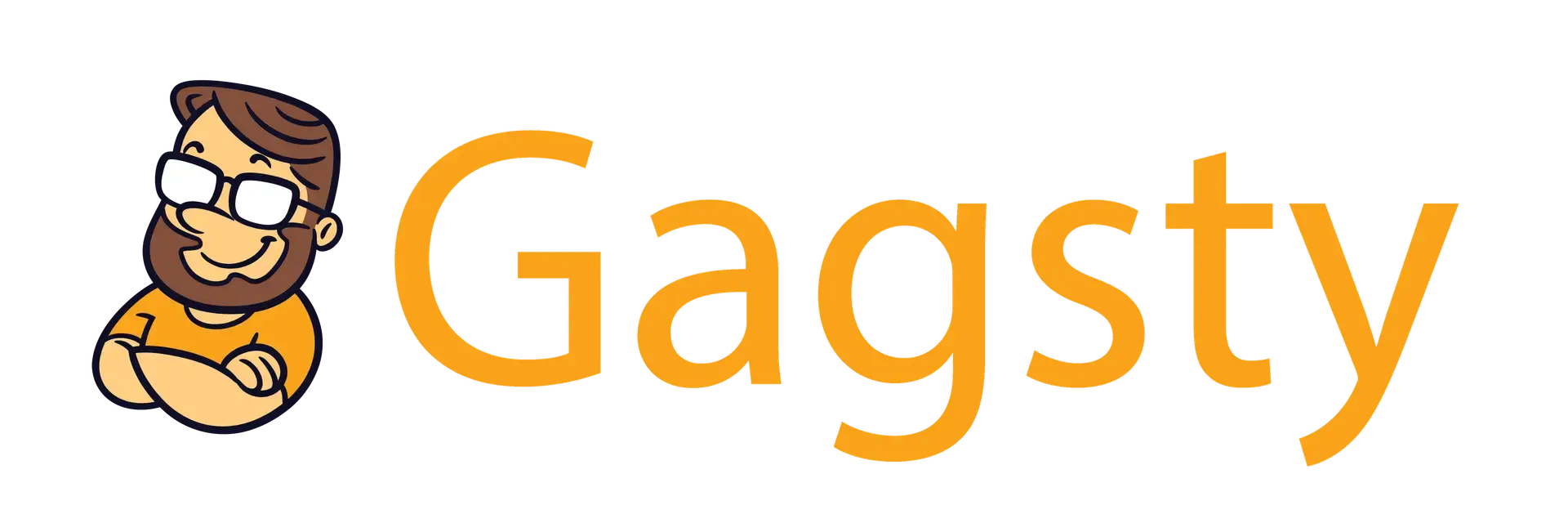What are the latest innovations in AI-powered blockchain projects?

Emerging Frontiers in AI-Powered Blockchain Projects: Decentralized Intelligence and Secure Ecosystems
The integration of artificial intelligence (AI) and blockchain has accelerated in 2025, driving transformative innovations across decentralized finance (DeFi), gaming, data security, and autonomous systems. As these technologies converge, they are redefining trust, efficiency, and scalability in Web3 ecosystems. Below, we explore the most significant advancements shaping this space, with insights from leading projects and their implications for platforms like the Gagsty Community.
1. Decentralized AI Marketplaces: Democratizing Machine Learning
Projects like SingularityNET and Fetch.ai are pioneering decentralized marketplaces where AI models and services are traded transparently. SingularityNET’s AGIX token powers a platform where developers monetize algorithms for natural language processing and machine learning. Meanwhile, Fetch.ai’s autonomous economic agents (AEAs) optimize DeFi liquidity pools and supply chains, handling $11.38M in recent token transactions to stabilize market operations.
Key Innovation: AI Agent Trust Registries
A breakthrough in 2025 is the AI Agent Trust Registry, developed through SingularityNET’s partnership with Privado ID. This system uses decentralized identifiers (DIDs) and zero-knowledge proofs to verify AI agents’ audit status, creators, and operational integrity. Such frameworks ensure trustless interactions between AI systems, critical for gaming platforms like Gagsty that rely on secure, autonomous NPCs and economies.
2. Blockchain-Backed AI Security: Thwarting Exploits and Fraud
AI is revolutionizing blockchain security through real-time anomaly detection and adaptive consensus mechanisms. CertiK’s 2025 Hack3d Report highlights AI-driven tools that reduced DeFi exploit losses by 42% compared to 2024 by auditing smart contracts and simulating attacks pre-deployment. Machine learning models now adjust validator selection in real-time, addressing vulnerabilities in PoW/PoS systems while curbing energy use.
Case Study: Fetch.ai’s ASI-1 Mini in Gaming
Fetch.ai’s collaboration with The Game Company integrates its ASI-1 Mini AI model into cloud gaming. During alpha testing, this led to 10,000 new wallets and 41,000+ on-chain transactions in 48 hours, showcasing AI’s role in enhancing user acquisition and in-game economies. For TON-based platforms like Gagsty, such models could enable dynamic questlines and self-balancing token rewards.
3. Tokenized Incentives for Decentralized Machine Learning
Bittensor’s TAO token exemplifies how blockchain incentivizes AI contributions. The protocol rewards developers for improving machine learning models in a decentralized network, with TAO’s market cap reaching $3.37B. Participants earn tokens based on their models’ informational value, fostering a collaborative ecosystem akin to Bitcoin’s mining rewards.
Cross-Chain Liquidity via Wrapped TAO
Bittensor’s wTAO (an ERC-20 token) bridges its Substrate-based blockchain to Ethereum, enabling DeFi integrations. This innovation allows TAO holders to stake assets in Ethereum liquidity pools while maintaining exposure to decentralized AI growth. Such mechanisms could help gaming communities diversify treasury reserves against market volatility.
4. AI-Optimized Blockchain Infrastructures
Layer-1 chains are embedding AI at the protocol level. Internet Computer (ICP) employs AI-driven “Proof-of-Useful-Work” to optimize decentralized web services, while Theta Network uses edge computing for AI-powered video transcoding. These infrastructures support real-time applications, such as Gagsty’s play-to-earn models, by reducing latency and fees.
The Rise of Layer-3 Solutions
Projects like XAI and Orbs are building Layer-3 blockchains tailored for AI operations. XAI processes 50,000 TPS, enabling gas-free NFT minting and sub-second finality—critical for scalable in-game asset interoperability. These advancements align with the Gagsty Community’s roadmap for cross-platform NFT utility.
5. Regulatory-Aligned AI: Privacy and Compliance
Decentralized AI models now comply with global standards through innovations like zero-knowledge proofs (ZKPs). These allow users to prove transaction legitimacy without exposing sensitive data, addressing MiCA’s strict AML requirements in the EU. Similarly, Ocean Protocol’s data marketplaces let users monetize information while retaining ownership, crucial for ethically training AI.
Impact on Blockchain Gaming
Regulatory shifts demand KYC-compliant NFT trades and transparent reward structures. Platforms integrating Modular Architecture (like The Sandbox) isolate compliance logic into separate smart contracts, balancing decentralization with legal obligations. For Gagsty, this could mean implementing soulbound NFTs for identity verification without compromising user privacy.
The Path Forward for AI-Blockchain Synergy
The fusion of AI and blockchain in 2025 is marked by three pillars: decentralized intelligence, self-securing ecosystems, and regulatory-ready frameworks. As Fetch.ai’s autonomous agents and Bittensor’s tokenized ML models gain traction, they set benchmarks for scalability and user-centric design. For gaming communities, these innovations enable richer economies, cross-chain asset utility, and AI-driven personalization—all while adhering to evolving global standards.
Gagsty.com remains at the forefront, exploring integrations with TON blockchain to harness these advancements. By prioritizing AI-audited smart contracts and interoperable NFTs, the platform is poised to deliver secure, engaging experiences in Web3’s next evolution
.
Authored by Gagsty’s Blockchain Research Team | Insights derived from CertiK, Fetch.ai, Bittensor, and SingularityNET

